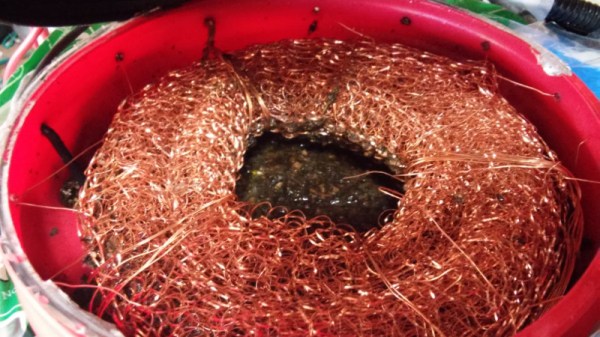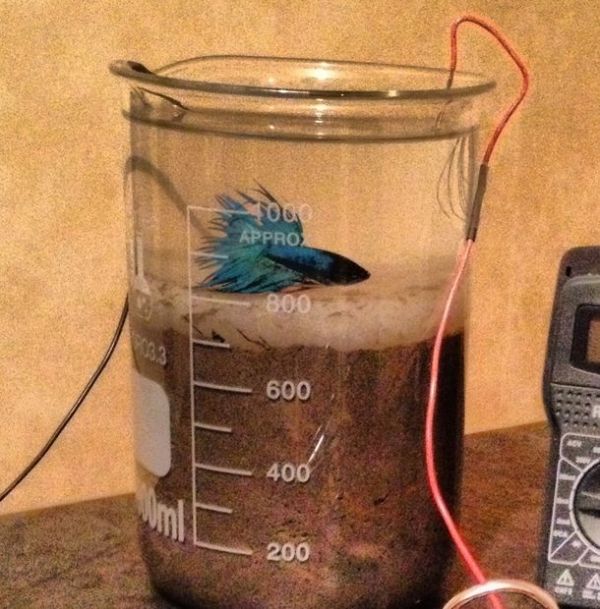A fascinating oddity in the list of potential alternative power sources is the microbial fuel cell, in which the chemical reactions of micro-organisms digesting their food are harnessed to harvest electrons and thus generate electrical current. We’d like to know more, so [Williamolyolson]’s soil microbial fuel cell is a particularly interesting glimpse into this field.
In this type of cell, an anode is placed at the bottom of a container of anaerobic wet soil medium laced with biomass to provide a food source for the bacteria, and a cathode is placed on the top of the medium exposed to air. The cell in this project appears to be a plastic coffee tub, and the electrodes are copper pan scourers. Unlike a chemical battery they do not need to be different materials and they themselves are not part of the chemistry of the cell, instead, they serve to collect and return the electrons to the cell.
The project logs detail a series of time-series measurements and experiments with placement of the cathode. Yield seems to be in the region of 200mV at about 1mA, though peaks as high as 400mV have been seen. It’s clear that this is not a cell that will replace your grid hook-up any time soon, but it still retains a lot of possibilities for use in micropower applications. There has been plenty of work in the field of micropower harvesting using other sources such as small solar cells, and this has the advantage of microbe-laden dirt being ubiquitous and free.
A couple of previous MFCs we’ve brought you include this multi-cell design said to be capable of charging a phone, and this cell that also supports a fish.












